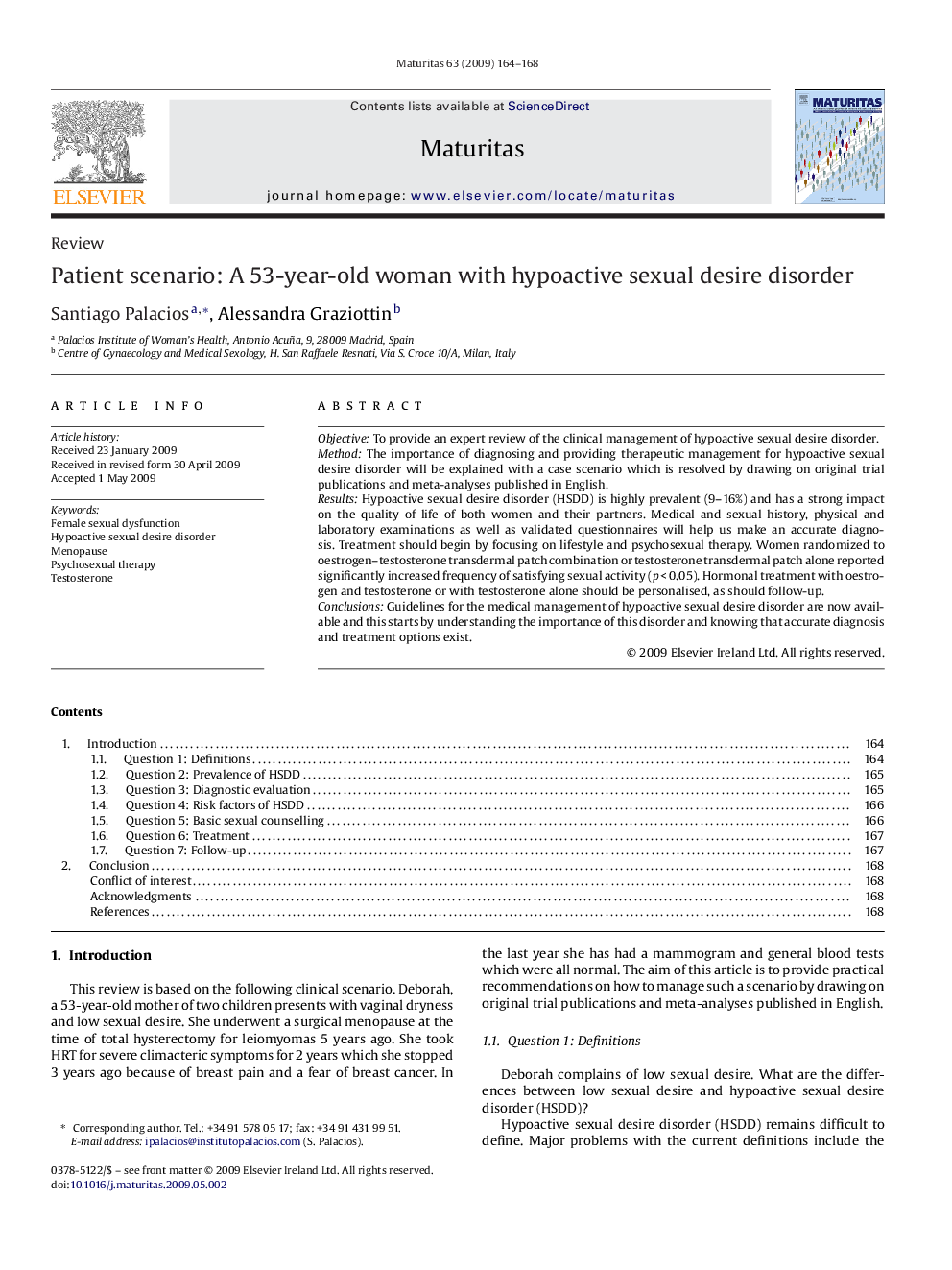| Article ID | Journal | Published Year | Pages | File Type |
|---|---|---|---|---|
| 1918108 | Maturitas | 2009 | 5 Pages |
ObjectiveTo provide an expert review of the clinical management of hypoactive sexual desire disorder.MethodThe importance of diagnosing and providing therapeutic management for hypoactive sexual desire disorder will be explained with a case scenario which is resolved by drawing on original trial publications and meta-analyses published in English.ResultsHypoactive sexual desire disorder (HSDD) is highly prevalent (9–16%) and has a strong impact on the quality of life of both women and their partners. Medical and sexual history, physical and laboratory examinations as well as validated questionnaires will help us make an accurate diagnosis. Treatment should begin by focusing on lifestyle and psychosexual therapy. Women randomized to oestrogen–testosterone transdermal patch combination or testosterone transdermal patch alone reported significantly increased frequency of satisfying sexual activity (p < 0.05). Hormonal treatment with oestrogen and testosterone or with testosterone alone should be personalised, as should follow-up.ConclusionsGuidelines for the medical management of hypoactive sexual desire disorder are now available and this starts by understanding the importance of this disorder and knowing that accurate diagnosis and treatment options exist.
